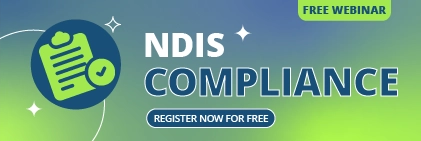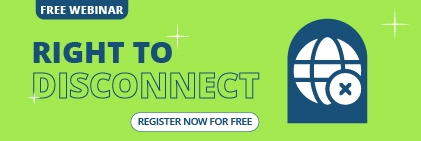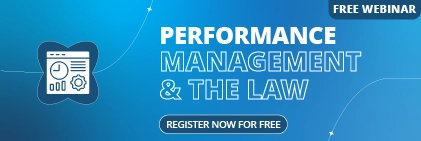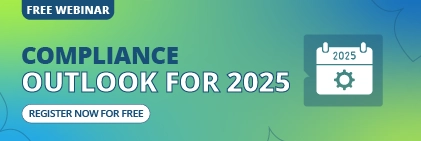Running a business these days feels like navigating a maze filled with ever-changing regulations, potential pitfalls, and the constant need to prove you’re doing things right. Governance, Risk, and Compliance (GRC) software steps up here. Think of it as your trusty compass and map, helping you eliminate the confusion and get everything in order.
Trying to manage all these complexities manually? It’s simply not sustainable anymore. A good GRC tool isn’t just about avoiding trouble; it’s about turning compliance from a dreaded chore into a real strategic advantage.
It can change how you operate.
So, how do you pick the right tool when so many options exist? That’s what we’re here for! I’ve compiled a list of the top 10 GRC software tools every business should seriously assess. We’ll dive into what makes each tick, the good and not-so-good bits, who they’re best for, and what you might expect to pay. Ready? Let’s go!
1. Sentrient GRC Software
Sentrient is like that helpful friend who knows all the workplace regulations, especially in Australia. They’re all about making compliance easy-peasy for businesses, whether you’re a small shop or a bigger enterprise. Their goal? To cut down on stress, avoid those hefty fines, and get you up and running with a pre-loaded system that works. While they offer a broader compliance suite, their sweet spot is making general workplace compliance simple and less intimidating.
Key Features:
Online compliance courses are legally endorsed, which is a huge plus.
- Workplace policy builder: Crafting policies just got a whole lot easier.
- Audit-ready reports: Need to show proof? They’ve got you covered.
- Performance management: From 360-degree reviews to setting goals and tracking learning, it helps your team grow.
- Customisable templates: Tweak performance reviews and workflows to fit your style.
Pros:
- Super affordable and quick to start, especially if you’re a small to medium-sized business.
- User-friendly – no complicated manuals needed!
- Strong focus on Australian workplace compliance is vital if you’re local.
- Helps educate your team and foster a better workplace culture.
Cons:
If you’re a massive enterprise with super complex, highly niche regulatory needs beyond general HR stuff, this might not have all the bells and whistles you want.
They don’t mention their broader GRC features beyond basic workplace compliance, so you might need to dig deeper.
Best Suited for: Small to medium businesses, and even larger Australian organisations, primarily looking to nail general workplace compliance, HR governance, and employee performance management.
Pricing: Get two free months of our All-In-One GRC Software. While specific public pricing isn’t always detailed, they emphasise that it’s “affordable” and comes “without setup costs.” This sounds like a subscription model to me.
2. Pali GRC
Pali GRC is your intelligent, efficient assistant, pulling all your governance, risk, and compliance tasks into one neat package. Their big promise? Saving you time and money by ensuring everyone’s on the same page and following the rules consistently. Plus, they pride themselves on transparency – no nasty surprises or hidden fees!
Key Features:
- Centralised duty management: Know who’s responsible for what.
- Breach and incident tracking: Catch issues, assign fixes, and follow through.
- Action plan delegation: Easily assign tasks and monitor progress.
- Feedback monitoring: Keep a pulse on what’s happening.
- Conflict of interest & NDA management: Important stuff, handled.
- Training & event tracking: Stay on top of learning and key dates.
- Risk identification: Use surveys to pinpoint potential problems.
- Customisable reporting: Get the insights you need, fast.
- Robust auditing: Keep everything accountable.
- Fine-grained user access: Control who sees what.
Pros:
- Comprehensive – covers a lot of ground in GRC.
- No hidden costs or penalties for more users – that’s refreshing!
- Designed to bring consistency across your whole organisation.
- Easy to use, which is always a bonus.
- They even offer a discount if you’re switching from another GRC system – nice touch!
Cons:
- You’ll have to call them for specific pricing, which can be a hurdle when browsing.
- Might not have the super deep, industry-specific functionalities that highly specialised GRC tools offer for niche markets.
Best Suited for: Businesses of all sizes looking for a transparent, all-in-one GRC solution that helps streamline their core processes without worrying about unexpected charges.
Pricing: Custom quotes, but they emphasise “no penalties for extra users, hidden costs, or additional modules.” They even give a 20% discount for the first six months if you switch from another system.
3. CyberCX GRC Solutions
CyberCX isn’t just about software; it’s about expert guidance. Think of it as your cybersecurity and GRC SWAT team. They bring deep knowledge to the table, helping businesses manage risks, meet regulatory demands, and build a rock-solid foundation for governance. Their whole approach is about embedding top-notch cybersecurity into your company’s DNA.
Key Features:
- Risk assessments: They’ll scrutinise your assets, tech, threats, and third-party vendors.
- Security Risk Management Plans (SRMPs): Get a clear roadmap for tackling risks.
- Business Continuity & Disaster Recovery: Essential planning for when things go sideways.
- Incident management: Be prepared for the worst with solid response plans.
- Audit services: From PCI-DSS to ISO 27001 and CPS234 – they handle the heavy lifting.
- ISMS certification & internal audits: Help you get certified and stay compliant.
- CISO/CIO as a Service: Need top-tier security leadership without hiring full-time? They can step in.
Pros:
- Deep, real-world expertise in cybersecurity that flows right into their GRC solutions.
- They offer comprehensive services, from assessing problems to planning and auditing.
- Fantastic for navigating various industry standards.
- They’re a global player with a vast network of pros.
Cons:
- This isn’t an “off-the-shelf” software you buy. It’s more of a service-based offering, meaning you’re hiring their teams.
- Naturally, pricing will be project-based and can be substantial because you’re paying for specialised consulting.
- You’ll need to be ready to partner closely with their experts, rather than just deploying a piece of software.
Best Suited for: Organisations that need expert, hands-on help with GRC and cybersecurity, especially those facing complex regulations, dealing with high-stakes assets, or looking to bring in outsourced CISO/CIO leadership and audit support.
Pricing: You’ll need to talk to them directly for a quote, as it’s service-based.
4. Vanta GRC
Vanta is all about trust. They’ve built a platform that pretty much automates your compliance journey, keeps an eye on your security, and makes dealing with vendor assessments a breeze. Their big promise? Simplifying how you achieve compliance for many different frameworks, thanks to continuous automation and real-time insights. It’s like having a dedicated compliance robot working 24/7.
Key Features:
- Continuous monitoring: Automatically gathers evidence and monitors your controls.
- Broad framework support: Handles over 20 compliance standards like SOC 2, ISO 27001, HIPAA, GDPR, PCI DSS, and more!
- Centralised security oversight: Get a single view of your security posture.
- Vendor risk streamlined: Automated questionnaires and easier vendor assessments.
- AI-powered insights: Smart suggestions to guide you.
- Integrations: Plays nicely with a whole bunch of other business tools.
Pros:
- Massive automation – seriously cuts down on manual work for compliance.
- Supports a vast variety of compliance frameworks.
- Gives you real-time visibility into exactly where you stand with compliance.
- Strong focus on security and continuous monitoring.
- Makes the audit process much, much simpler.
Cons:
- The price tag can be a bit steep, especially if you’re a smaller business or need to add a lot of different compliance frameworks.
- While it’s automated, there might be a bit of a learning curve to get everything set up just right.
- Initial setup and integration with your existing tools could take some effort.
Best Suited for: Growing and established companies that need to get compliant (and stay compliant!) with multiple security and privacy frameworks quickly and efficiently. Especially popular in tech and other industries with strict security rules.
Pricing: Starts roughly from $7,083 to $49,318 per year, with a typical buyer paying around $19,750. Adding more frameworks usually costs extra, though you might get discounts for bundles. You can often negotiate, especially for more extended contracts.
5. Workiva GRC
Workiva built a cloud platform that simplifies complex financial, operational, or regulatory reporting. Their GRC solution is designed to connect data, people, and processes, ensuring transparency, accuracy, and efficiency. Think of it as the ultimate connector for all your GRC efforts.
Key Features:
- Centralised data & reporting: All your info in one place.
- Collaborative platform: Your GRC team can work together seamlessly.
- Automated workflows: Say goodbye to manual data collection and reporting.
- Real-time insights: Always know what’s going on.
- Deep integrations: Connects with your various data sources and existing enterprise systems.Supports all internal audit, risk management, and compliance programs.
Pros:
- Excellent for data management and reporting, mainly if you deal with lots of financial or regulatory compliance.
- Fosters strong teamwork among GRC stakeholders.
- Highly scalable, perfect for big organisations.
- Top-notch security – enterprise-grade protection.
- The interface, like a spreadsheet, is often familiar, making it easier to adopt.
Cons:
- Because it’s so comprehensive, there can be a steep learning curve.
- Might be too pricey for smaller businesses.
- Setting it up can be complex, particularly if you have many integrations.
Best Suited for: Large enterprises and businesses in highly regulated industries that need robust data handling, collaborative reporting, and automation for incredibly complex financial, operational, and regulatory compliance, including internal audit and risk management.
Pricing: Not public. It’s typically customised based on your organisation’s specific needs and which modules you use. Expect enterprise-level pricing.
6. MetricStream GRC
MetricStream is a big name in the GRC world and a real veteran. They offer a deep, integrated platform that covers risk, compliance, audit, and policy management. It’s built from the ground up for the complex demands of large companies, giving you tons of functionality and ways to make it your own.
Key Features:
- Integrated risk management: Covers enterprise, operational, IT, and third-party risks.
- Compliance management: Keeps an eye on changing regulations.
- Audit management: For both internal and external audits.
- Policy and document management: Keep all your essential papers in line.
- Incident and issue management: Handle problems efficiently.
- Business continuity management: Be ready for anything.
- Advanced analytics: Dig deep into your data for insights.
- Configurable workflows & low-code customisation: Make it fit your exact processes.
- Loads of native integrations with other systems.
Pros:
- Intense functionality across all areas of GRC.
- Highly customisable – you can tailor it to your organisation.
- Perfect for huge enterprises with complex GRC needs.
- Strong integration capabilities.
- Even uses AI/ML for more brilliant insights.
Cons:
- The total cost of ownership can be high – think licensing, services, and ongoing support.
- There’s a steep learning curve and setting up and maintaining can be pretty complex.
- You might need some profound technical expertise for customisation and data migration.
- Some users have mentioned it can sometimes feel sluggish, and self-service reporting might be limited.
Best Suited for: Large enterprises and highly regulated organisations that have complex GRC demands, sizable budgets, and dedicated GRC teams ready to dive into a powerful, customisable, but potentially resource-intensive platform.
Pricing: Custom quotes. Expect costs to range from roughly $75,000 for smaller setups to over $1 million annually for large enterprises. Implementation costs are extra.
7. CAMMS GRC Software
About CAMMS is a well-regarded cloud-based GRC platform known for being flexible and easy to use. It’s all about helping organisations rethink how they tackle risks and opportunities, offering a joined-up approach that follows best practices and international standards like ISO 31000 and COSO. It’s about turning potential problems into manageable parts of your strategy.
Key Features:
- Enterprise Risk Management (ERM): Get a handle on risks across your business.
- Incident, Hazard, Issue & Audit Management: Track everything that goes wrong (or right!) and audit it.
- Compliance management: Keep up with all the regulations.
- Strategy & performance linking: Connect your risks directly to your business goals.
- Customisable interface: Make it look and feel right for you.
- Centralised data: All your info in one place, streamlining workflows.
- Robust reporting: Get clear insights.
Pros:
- User-friendly and intuitive – a big plus for daily use.
- Flexible and adaptable across different industries.
- Brilliantly integrates risk management with strategic planning.
- Adheres to critical international standards like ISO 31000 and COSO.
- Users often praise its ease of use and smooth transition process.
Cons:
- A few users have pointed out some navigation quirks in certain areas.
- While flexible, the extent of deep customisation for highly specialised needs isn’t always highlighted upfront.
- You’ll need to ask them for pricing, making initial comparisons tricky.
Best Suited for: Organisations of various sizes seeking an integrated, user-friendly GRC solution that helps align risk management directly with their business objectives and follows international best practices.
Pricing: Not publicly available; direct inquiry required.
8. StandardFusion GRC Compliance Software
StandardFusion is a GRC platform built for performance, particularly focused on nailing information security risk and compliance. Their goal is to give you one single, reliable source of truth for all your compliance needs and to simplify all those tasks that come with internal and external audits. It’s like having a very organised control tower for your security posture.
Key Features:
- Risk Management: Identify, assess, and treat risks effectively.
- Audit Management: Streamline your audit processes.
- Compliance Management: Covers a vast range (ISO, SOC 2, NIST, HIPAA, GDPR, PCI-DSS, FedRAMP, etc.).
- Vendor Management: Handle security questionnaires and track third-party risks.
- Policy & Incident Management: Keep policies updated and incidents under control.
- Access controls: Manage who can see and do what.
- Workflow automation: Automate repetitive tasks.
- Reporting & statistics: Get the data you need to make decisions.
- Integrations: Works with tools like Slack, Jira, Confluence, and Okta.
Pros:
- Strong focus on information security risk and compliance – ideal if that’s your primary concern.
- Supports a wide array of compliance frameworks.
- Gives you that crucial “single source of truth” for all your compliance data.
- Great for managing vendor risk.
- They seem good at listening to customer feedback and building useful features.
Cons:
- The starting price can be steep, especially if you’re a smaller company.
- To get the most out of it, you’ll need a thorough setup and a good onboarding plan.
- No mobile app available right now, which might be a drawback for some.
Best Suited for: Companies, especially those highly invested in information security and data privacy, who must manage compliance across multiple security standards, simplify their audit processes, and effectively handle third-party vendor risk.
Pricing: Starts at $1,800 per month, not including setup fees.
9. SailPoint Access Risk Management (via Identity Security Cloud)
SailPoint is a big name in identity security. Their Access Risk Management solution, an add-on to their Identity Security Cloud platform, tackles risks related to who has access to what. It gives you a crystal-clear view of user permissions, automates tedious access certifications, and helps enforce rules like “segregation of duties” (SoD)—super important for preventing fraud.
Key Features:
- Identity & Cloud Governance: Manage identities and access across your ecosystem.
- Automated Access Certifications: Say goodbye to manual reviews.
- Policy Management & SoD: Enforce rules to prevent conflicts of interest.
- Identity Lifecycle Management: Automate provisioning and de-provisioning users.
- Access Request Management: Streamline how people request access with automated approvals.
- Comprehensive reporting: Get deep insights into your access risks.
Pros:
- Excellent for managing identity and access risks, a massive part of GRC.
- Powerful automation for all things access-related.
- Gives you deep visibility into “who has access to what” – a real game-changer for audits.
- Helps you easily achieve and prove compliance for access controls.
- Improved user experience – both for end-users and administrators.
Cons:
- It’s generally considered an expensive solution, especially when you factor in initial licensing and implementation.
- Can be complex to set up and manage, often requiring specialised expertise.
- There’s a learning curve for administrators.
- It’s primarily focused on identity and access so that you might need other tools for broader GRC areas (like operational risk).
Best Suited for: Large enterprises and organisations with complex identity and access management needs. Think highly regulated industries where tight access controls, SoD enforcement, and crystal-clear audit trails of user access are non-negotiable.
Pricing: SailPoint’s Identity Security Cloud base editions start around $10-$30 per user per month, with Access Risk Management being an add-on module. Expect initial platform costs to start from around $75,000.
10. CorpGovRisk (CGR)
CorpGovRisk, or CGR, offers a GRC software platform to bring everything under one roof. They aim to integrate assurance, audit, compliance, safety, and risk management into a clear view. With loads of industry experience, CGR is all about simplifying those often-daunting GRC requirements across various business sectors. It’s about getting a unified picture of your organisational health.
Key Features:
- Enterprise Risk Management (ERM): Manage risks across your organisation.
- Compliance module: Stay on top of your obligations.
- Audit management: Streamline your audit processes.
- Incident & Safety management: Track and manage issues, including workplace safety.
- ESG (Environmental, Social, Governance) software: A growing area, covered here.
- Customisable forms & workflows: Tailor it to your specific needs.
- Real-time dashboards & reports: Get the data you need when needed.
Pros:
- An all-in-one, integrated GRC suite.
- Scalable, meaning it can grow with your business.
- Testimonials suggest they have strong customer service.
- Focuses on connecting assurance, audit, compliance, safety, and risk.
- Reported to be quick to learn and easy to use for administrators.
Cons:
- The exact depth of features for each GRC area isn’t always apparent without a demo.
- You’ll need to reach out to them directly for pricing information.
- Less public information or detailed reviews than some bigger global players.
Best Suited for: Organisations looking for a unified, integrated GRC platform simplifying risk, compliance, audit, and safety management. It’s a good fit if you value ease of use, customisation, and strong local support (especially given its presence in Australia, the UK, and Canada).
Pricing: Not publicly available; direct inquiry required.
Wrapping It Up
Choosing the right GRC software really can be a game-changer for your business. It’s not just about avoiding fines; it’s about making more intelligent decisions, fostering trust, and running a tighter ship. As you sift through these options, think about your industry, how complex your regulations are, your budget, and what kind of team you have to support it.
Whether you’re a small startup trying to keep your ducks in a row or a massive corporation with intricate global compliance needs, there’s a GRC solution. Take your time, do your homework, and pick the one that truly fits. It’s an investment that can pay dividends in peace of mind and strategic advantage.
Ready to take the next step in streamlining your GRC efforts?
Frequently Asked Questions (FAQs)
Alright, so you’ve read about all these excellent GRC tools. But I bet a few questions are still bouncing around in your head. That’s normal! Here are some of the most common questions I hear about GRC software, boiled down into simple answers:
1. What exactly is GRC software, anyway? Is it just for big companies?
Good question! GRC stands for Governance, Risk, and Compliance. Think of it as an innovative system that helps your business do three things well:
- Governance: This is about how your company runs. It helps you set up clear rules, responsibilities, and processes to ensure everyone’s pulling in the same direction and your business goals are ethically met.
- Risk Management: Every business faces risks, such as a potential data breach, a supplier problem, or even a natural disaster. GRC software helps you identify these risks, determine their likelihood, and plan how to deal with them before they become big headaches.
- Compliance: This is all about following the rules! Whether it’s government laws (like privacy regulations), industry standards, or your internal policies, GRC software helps you track these, prove you’re following them, and avoid costly fines.
And no, it’s not just for the big guys anymore! While giant corporations use it, increasingly small and medium businesses (SMBs) find GRC software essential. It scales, meaning there are options for pretty much any size business.
2. Why can’t I use spreadsheets to manage my GRC? They’re free!
Ah, the classic spreadsheet dilemma! You can use spreadsheets, but it’s like trying to bail out a leaky boat with a teacup. For a small, straightforward business, maybe. But as soon as you grow, things get messy, fast.
Here’s the rub with spreadsheets:
- No single source of truth: You end up with versions flying around, and no one knows which is the latest or most accurate. Chaos!
- Manual updates: Keeping up with changing regulations is a full-time job with spreadsheets prone to human error.
- Limited visibility: Can you quickly see all your risks in one place? What about audit trails? Probably not.
- Collaboration nightmares: Working with multiple teams on a complex compliance task in a spreadsheet is a recipe for frustration.
- Security risks: Spreadsheets are easier to lose, steal, or accidentally mess up.
GRC software, on the other hand, centralises everything, automates a lot of the grunt work, and gives you real-time insights. It’s like upgrading from that teacup to a powerful bilge pump!
3. How much does GRC software usually cost? Is it a huge investment?
That’s the million-dollar (or sometimes, hundred-thousand-dollar!) question; it depends. Just like buying a car, there’s a vast range.
Factors that influence the price include:
- Your business size: Smaller businesses usually pay less than large enterprises.
- Number of users: Many systems charge per user.
- Features: Do you need basic compliance tracking or a full-blown enterprise risk management suite?
- Compliance frameworks: Some systems charge extra for each specific regulation you want to track (e.g., ISO 27001, HIPAA).
- Deployment (cloud vs. on-premise): Cloud-based (SaaS) is usually subscription-based with lower upfront costs.
- Implementation & support: Don’t forget these! Setting up, integrating with your existing systems, and getting ongoing support can add to the total cost.
You might see prices ranging from a few hundred dollars a month for simpler tools (like some Australian-focused ones for SMBs) to tens or even hundreds of thousands of dollars annually for comprehensive enterprise solutions. Always ask for a clear breakdown of all costs, not just the base license.
4. How long does it take to implement GRC software?
This isn’t overnight, but it’s not like building a skyscraper! The timeline depends on:
- The complexity of the software: A basic tool might be up and running in weeks, but a super powerful, highly customisable enterprise solution could take months.
- Your internal resources: Do you have a dedicated team? Or will people fit it in with their other duties?
- How much data do you need to migrate? If you’re moving from a mess of spreadsheets, it’ll take longer.
- Your organisation’s readiness for change: Getting everyone on board and trained is a big part.
Many businesses opt for a “phased approach,” starting with one module or specific compliance area, getting that working well, and then expanding. This makes it less overwhelming and helps you see value sooner.
5. What are the biggest challenges businesses face when implementing GRC software?
Good question! Knowing the hurdles upfront can help you prepare. From what I’ve seen, here are the common ones:
- Getting everyone on board: People don’t always love new systems. It’s crucial to show your team why this software will make their lives easier, not harder. Leadership buy-in is key!
- Defining what you need: Getting lost in all the features is easy. Start by clearly outlining your most significant pain points and what success looks like for your GRC program.
- Data, data, data: Gathering and cleaning up your existing data can be a monster task, but the software must work magic.
- Integration with other systems: Will it talk nicely to your HR system, IT security tools, or financial software? This is often a technical hurdle.
- Not having a clear roadmap: Just buying the software isn’t enough. You need a solid plan for using it, who’s responsible for what, and how you’ll measure success.
The good news? Most reputable GRC vendors offer support and guidance to help you navigate these challenges. You’re not alone!
6. Can GRC software help me avoid all compliance fines?
While GRC software is a potent tool for reducing your risk of fines and penalties, it’s not a magic shield that guarantees you’ll never face one. A top-of-the-line security system for your house is great, but leaving your front door wide open won’t help much!
What GRC software does brilliantly is:
- Give you visibility: It helps you see where you might have compliance gaps before an audit finds them.
- Automate evidence collection: It will be much easier to prove that you follow the rules when an auditor comes knocking.
- Track changes: Regulations change constantly, and the software helps you stay updated.
- Streamline processes: By making compliance tasks more efficient, you’re less likely to miss something.
Ultimately, it still comes down to your commitment to following processes and making ethical decisions. The software makes it a lot easier to do so.
Read More About Governance, Risk Management, and Compliance:
- How GRC Strategies Protect Your Organisation from Risks and Liabilities
- Overcoming GRC Implementation Challenges: A Comprehensive Guide
- The Benefits of Integrating GRC into Your Business Operations
- How to Build a Risk Assessment Framework: 5 Steps Explained
- The Future of AI in Governance, Risk and Compliance (GRC): A Detailed Guide





